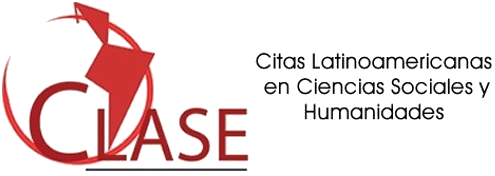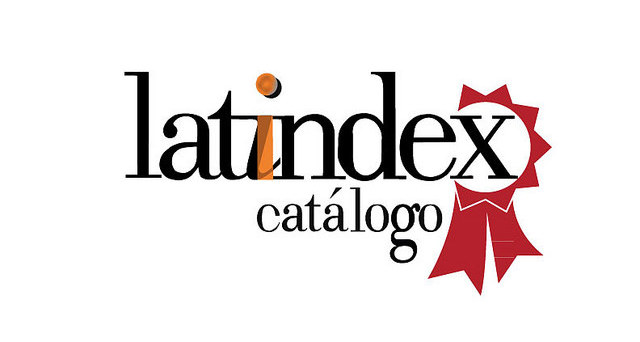Adolescent Women Who Commit Violent Crimes In Mexico
DOI:
https://doi.org/10.29340/en.v3n5.133Keywords:
women, adolescents/teens, violence, crime, vulnerabilityAbstract
The purpose of this work is to reflect on the specific characteristics of violent crimes in which teenagers in Mexico participate. It is based on a study that included conducting 730 interviews with adolescents, men and women, detained in 17 states of the Republic. The question that motivated this study was: is there a relationship between the conditions of vulnerability experienced by teenagers in their early childhood (Adverse Child Experiences) and the violent crimes they committed? In this work we cite the testimonies of nine adolescent women that allow the analysis of the traits that distinguish the violent behaviors in which they participate.
Downloads
References
Azaola, Elena (2017). Informe Especial. Adolescentes: Vulnerabilidad y Violencia. Ciudad de México: Comisión Nacional de Derechos Humanos, disponible en http://www.cndh.org.mx/sites/all/doc/Informes/Especiales/Informe_adolescentes_20170118.pdf, consultado el 19 de diciembre de 2019.
Bonnie, Richard J., Robert L. Johnson, Betty M. Chemers y Julie A. Schuck (eds.) (2013). Reforming Juvenile Justice: A Developmental Approach. Washington: National Academies Press. Disponible en http://nap.edu/catalog/14685/reforming-juvenile-justice-a-develpmental-aproach, consultado el 19 de diciembre de 2019.
Carlen, Pat y Diana Christina (1985). Criminal Woman. Cambridge: Polity Press.
Carrington, Kerry (2013). “Girls’ violence: The Case for Feminist Theory of Female Violence”, en International Journal of Crime, Justice and Social Democracy, vol. 2, núm. 2, pp.63-79. https://doi.org/10.5204/ijcjsd.v2i2.101 DOI: https://doi.org/10.5204/ijcjsd.v2i2.101
Cauffman, Elizabeth y Laurence Steimberg (2000). “(Im)maturity of Judgment in Adolescence: Why Adolescents may be less Culpable than Adults”, en Behavioral Sciences and the Law, núm. 18, pp.741-760. https://doi.org/10.1002/bsl.416 DOI: https://doi.org/10.1002/bsl.416
Del Olmo, Rosa (Ed.) (1998). Criminalidad y criminalización de la mujer en la región andina. Caracas: pnud.
Department of Justice (2012). Report of the Attorney General’s National Task Force on Children Exposed to Violence. Washington: Department of
Justice.
European Union (2005). Women, Integration after Prison: Analysis of the Processes of Socio Labour Integration of Women Prisoners in Europe. Disponible en: www.surt.org/mip, consultado el 19 de diciembre de 2019.
Felitti, Vincent, J. y Robert F. Anda (2014). “The Lifelong Effects of Adverse Childhood Experiences”, en Chadwick’s Child Maltreatment. Sexual Abuse and Psychological Maltreatment, vol. 2, pp. 203-215. Saint Louis: stm Learning Inc.
Franklin, Corney A. (2008). “Women Offenders, Disparate Treatment, and Criminal Justice: a theoretical, historical, and contemporary overview”, en Criminal Justice Studies, vol. 21, núm. 4, pp. 341-360. https://doi.org/10.1080/14786010802554238 DOI: https://doi.org/10.1080/14786010802554238
Heidensohn, Frances (1995). Women and Crime. Nueva York: New York University Press.
Larrauri, Elena (comp.) (1994). Mujer, Derecho Penal y Criminología. Madrid: Siglo Veintiuno.
MacArthur Foundation (2015). Juvenile Justice Report 2015. Chicago:
MacArthur Foundation.
Monahan, Kathryn C., Laurence Steinberg, Elizabeth Cauffman y Edward P. Mulvey (2009). “Trajectories of Antisocial Behavior and Psychosocial Maturity from Adolescence to Young Adulthood”, en Developmental Psychology, vol. 45, núm. 6, pp.1654-1668. https://doi.org/10.1037/a0015862 DOI: https://doi.org/10.1037/a0015862
Mulvey, Edward P., (2011). Highlights from Pathways to Desistance: A Longitudinal Study of Serious Adolescent Offenders. Washington: Department of Justice, Office of Juvenile Justice and Delinquency Prevention. Disponible en: https://www.ncjrs.gov/pdffiles_I/ojjdp/230971.pdf, consultado el 19 de diciembre de 2019.
Reavis, James, Jan Looman, Franco Kristina, Briana Rojas, (2013), “Adverse Childhood Experiences and Adult Criminality: How Long Must We Live before We Possess Our Own Lives?”, en The Permanente Journal, vol. 17, núm. 2, pp. 44-48. https://doi.org/10.7812/TPP/12-072 DOI: https://doi.org/10.7812/TPP/12-072
Save the Children (2016). Las y los adolescentes que México ha olvidado. Dsponible en: https://www.savethechildren.mx/sites/savethechildren.mx/files/resources/Las%20y%20los%20%20adolescentes%20que%20Mexico%20ha%20olvidado_0.pdf, consultado el 19 de diciembre de 2019.
Smart, Carol (1989). Feminism and the Power of Law. Londres: Routledge.
Springer, Cassie (2000). “Stories of Women in Prison”, en Berkeley Women’s Law Journal, núm.15, pp.354-357.
Steinberg, Laurence, Elizabeth Cauffman y Kathryn C. Monahan (2015). “Psychosocial Maturity and Desistance from Crime in a Sample of Serious Juvenile Offenders”, en Juvenile Justice Bulletin, marzo. Washington: ojjdp, Department of Justice.
Zaffaroni, Raúl (1993). “La mujer y el poder punitivo”, en Sobre patriarcas, jerarcas, patrones y otros varones. Costa Rica: ilanud.
Zahn, Margaret (2009). The Delinquent Girl. Philadelphia: Temple University Press.
Zahn, Margaret, A. Hawkins, J. Chaincone y A. Whitworth (2008), The Girl’s Study Group. Understanding and Responding to Girl’s Delinquency, Office of Justice Programs, US Department of Justice, www.ojp.usdoj.gov/ojjdp
Downloads
Published
Issue
Section
License
Copyright (c) 2020 Encartes Antropológicos

This work is licensed under a Creative Commons Attribution-NonCommercial 4.0 International License.
Aviso de derechos de autor
- Los autores/as conservan los derechos de autor y ceden a la revista el derecho a la primera publicación con el trabajo registrado con la licencia de atribución Creative Commons, que permite a terceros utilizar lo publicado siempre que mencionen la autoría del trabajo y a la primera publicación en esta revista
- Los autores/as pueden realizar otros acuerdos contractuales independientes y adicionales para la distribución no exclusiva de la versión del artículo publicado en esta revista (por ej. Incluirlo en un repositorio institucional o publicarlo en un libro) siempre que indiquen claramente que el trabajo se publicó por primera vez en esta revista.
El material puede ser copiado, distribuido, comunicado, ejecutado públicamente. Se pueden hacer obras derivadas de él. No se puede utilizar para fines comerciales. Se debe reconocer y citar la obra de la forma en que tú especifiques.










